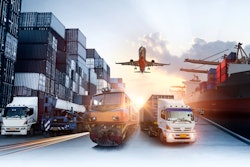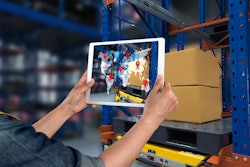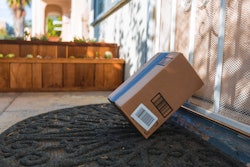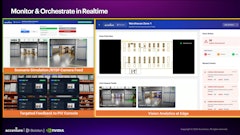
With consumer shopping habits and expectations changing, and supply chain delays at an all-time high, retailers cannot afford to take their customers, new or long standing, for granted. From the first click, to the delivery of an item, consumers require insight into every step of their products or orders. Consumers now expect businesses to deliver a superior service and if their preferred retailer is unable to provide information during any step of their shopping journey, they will look elsewhere.
For retailers, this presents both opportunities and challenges when managing changes in the retail-supply chain ecosystem and consumer behavior. By utilizing integrated mobile technology retailers can maintain their customer relationship, remain ahead of the curve and address the biggest concerns of the moment: delivery, speed and availability. Here are a few ways retailers can operate in a state of flux that delivers on consumers expectations.
First click advantage
As the saying goes, the customer is king (or queen) and a negative customer experience can have a huge impact on any businesses’ bottom line. Good customer service is the quality and timely assistance provided by a business to the people who use or buy its products and services.
In SOTI’s latest report, “From Clicks to Ships: Navigating the Global Supply Chain Crisis,” 68% of respondents said they expect to know, at all times, where their order is within the delivery process. If there’s a hold up on an order, what is it and how will it be resolved? Customers want to know. And if a retailer can’t tell them, they’ll shop somewhere that can.
If an item is out of stock, customers also demand to know when it will be available. In fact, only 13% of consumers state retailers are providing accurate information on which items are in stock. One could surmise that this means consumers feel that the remainder, 87% of retailers, do not know what is happening with their own inventory. Being among those who provide accurate information on merchandise availability will surely stand out from their competition.
Supply chain shortages are not the customers problem
A chain is only as strong as its weakest link. There are currently a few contributions to shortages around the globe including not enough drivers for transport trucks, COVID continuing to halt production and shipping costs are now higher for companies to get their products to where they need to be.
Shortages in the supply chain have greatly impacted businesses and consumers in nearly every industry from delays of food deliveries, backorders for new appliances and the bottleneck in the Suez Canal. Supply chain issues have been felt every step of the way, with 57% of consumers saying they haven’t been able to buy items they want or have had to opt for alternatives. Even though consumers know what’s going on, they still want their items when they want them.
The math is simple, more tech + more information = happy customers. With this new awareness, shortages and supply chain constraints are changing consumers’ shopping habits such as buying locally as a means to avoid waiting weeks for overseas shipments. This is where retailers need the right mobile technology in place, in order to respond to constantly shifting demands and to give the consumer the information they require.
Mobile tech is saving the customer experience
Technology from different systems, devices and locations must sync to experience the highest possible levels of uptime. When there is a lack of communication and retailers are unaware of what’s happening in their supply chain, that is when customers get frustrated. There are new mobile tech strategies retailers can implement to keep good communication with logistics partners and provide transparency and flexibility to consumers, including:
- Radio Frequency Identification (RFID) technology: RFID tech, allows retailers to quickly find items or assets in the supply chain or at a manufacturing plant and execute without delays by managing inventory and relay real-time updates to consumers and retailers.
- Geo-Retailing: Asset management via tracing and tracking is more secure with a geofence as the technology can protect items on the move such as trucks and goods, and stationary items like warehouses. Geofencing can be used to alert drivers when they are approaching a full warehouse and reroute them accordingly. ETAs can be updated automatically based on factors like vehicle speed, distance and necessary stop points, then shared with relevant stakeholders to ensure deliveries are kept on time.
- Consumer Consented Devices: Some retailers are now providing customers a device as soon as they enter the store to serve online reviews of a product they see in-store, provide product suggestions based on popular picks online in-person, and offering social distancing to help them feel safe while shopping in-store.
When customers feel appreciated, companies gain measurable benefits, including the chance to win more of their customers’ spending dollars and loyalty. The payoffs for great experiences and being made to feel valued are tangible: up to a 16% price premium on products and services, plus increased loyalty. Additionally, a premium customer experience can help increase revenue by between 4% and 8%.
Whether it’s developing and deploying apps, securing sensitive data, remotely resolving device issues or managing Internet of Things (IoT) enabled devices, retailers have an obligation to provide the highest level of customer service to thrive through the supply chain crisis. Wherever retailers can make investments that alleviate shopping pain points, they will keep their customers.



















